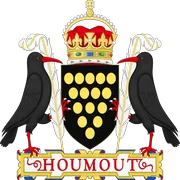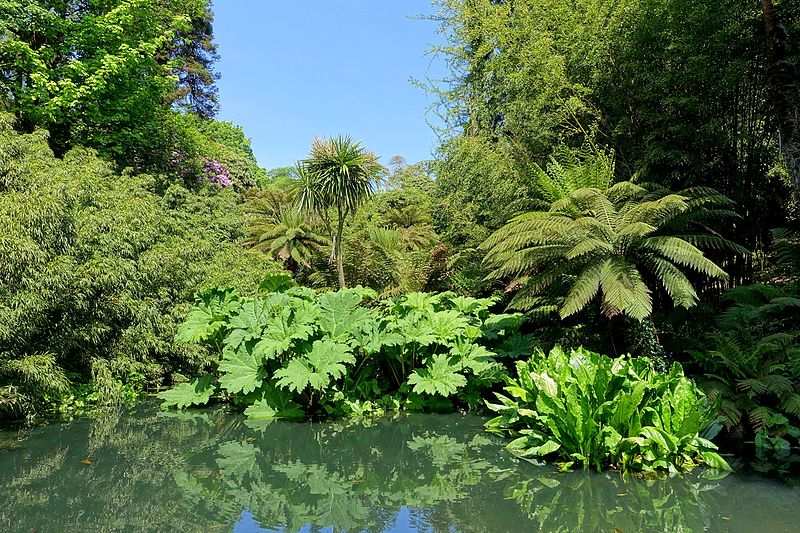The Lost Gardens of Heligan, located in Cornwall, England, are a sprawling 200-acre estate that was once forgotten and overgrown for decades. Rediscovered in 1990, these historic gardens have been meticulously restored to their former glory, offering visitors a glimpse into the grandeur of Victorian horticulture. Originally created by the Tremayne family in the 18th century, the gardens fell into disrepair after World War I when many of the estate’s workers never returned from battle. Today, the Lost Gardens of Heligan feature a diverse array of attractions, including exotic plants, ancient woodlands, a subtropical jungle, and working Victorian-era productive gardens. The restoration project has become one of the most popular botanical gardens in the UK, showcasing the beauty of nature and the importance of preserving historical landscapes.
Hidden beneath a tangle of overgrown vegetation for decades, the Lost Gardens of Heligan lay dormant, waiting to be rediscovered. This horticultural gem, nestled in the heart of Cornwall, England, has a fascinating story that reads like a real-life fairy tale. It all began in 1990 when Tim Smit and John Willis stumbled upon the derelict estate, setting in motion a remarkable journey of restoration and rebirth.
The gardens, once the pride of the Tremayne family, had fallen into disrepair following the outbreak of World War I. As the estate’s workforce was called to serve in the trenches, nature slowly reclaimed the meticulously manicured grounds. For over 70 years, Heligan slumbered, its secrets hidden beneath a verdant blanket of ivy and brambles.
When Smit and Willis first set foot on the property, they were met with a scene of utter neglect. Yet, amidst the chaos, they saw glimpses of the garden’s former glory. Intrigued by the potential lying dormant beneath the overgrowth, they embarked on what would become Europe’s largest garden restoration project.
The task ahead was monumental. Teams of dedicated volunteers and experts worked tirelessly to clear away decades of neglect, unearthing long-forgotten features and breathing new life into the gardens. As they peeled back layers of history, they made exciting discoveries that shed light on Heligan’s past.
One of the most captivating finds was a tiny room, hidden away in the corner of one of the walled gardens. Inside, the restoration team found a treasure trove of gardeners’ signatures etched into the lime-washed walls, along with the fateful date: August 1914. These poignant messages served as a stark reminder of the lives disrupted by the Great War and the profound impact it had on Heligan.
As the restoration progressed, the team uncovered a diverse array of garden spaces, each with its own unique character. The Productive Gardens, once a hub of activity supplying the estate with fresh produce, were painstakingly brought back to life. Today, visitors can wander through rows of heritage vegetables and admire the restored glasshouses, marveling at the ingenuity of Victorian horticulture.
The Pleasure Grounds, designed to delight and enchant, gradually emerged from their green cocoon. Ancient rhododendrons and camellias, some over 150 years old, were carefully pruned and nurtured back to health. The Italian Garden, with its romantic atmosphere and stunning views, was lovingly restored to its former elegance.
Perhaps one of the most iconic features of Heligan is the Jungle Garden. This subtropical valley, sheltered from harsh winds, creates a microclimate that allows exotic plants to thrive. Towering tree ferns, giant rhubarb, and banana plants transport visitors to a world far removed from the Cornish countryside.
The Lost Gardens of Heligan opened to the public in 1992, and since then, they have captured the imagination of visitors from around the world. The gardens serve not only as a living museum of horticultural history but also as a testament to the power of nature and human perseverance.
Today, Heligan continues to evolve and grow. The team remains committed to sustainable practices, preserving rare plant species, and maintaining the delicate balance between conservation and public access. Educational programs and events throughout the year invite visitors to engage with the gardens on a deeper level, fostering a connection to the natural world and the rich history of the estate.
The story of Heligan’s rediscovery and restoration is a reminder of the hidden treasures that may lie just beneath our feet. It speaks to the enduring allure of gardens and their ability to captivate and inspire across generations. As visitors wander through the lush landscapes of Heligan, they become part of its ongoing narrative – a tale of loss, rediscovery, and the timeless beauty of nature reclaimed.
The Lost Gardens of Heligan stand as a testament to the power of restoration and the enduring beauty of nature. Rediscovered and painstakingly revived after decades of neglect, these gardens now serve as a living museum of Victorian horticulture and a celebration of Cornwall’s rich botanical heritage. The gardens’ resurrection not only preserves a significant piece of history but also provides a unique glimpse into the past while offering modern visitors a chance to experience the wonder and tranquility of a bygone era. As a symbol of renewal and the triumph of dedication over decay, the Lost Gardens of Heligan continue to inspire and educate, ensuring that this once-forgotten treasure will remain a cherished part of Britain’s cultural and natural landscape for generations to come.

